Tom's Guide Verdict
The Canary Pro wireless security camera has temperature and air-quality sensors, and is the first such camera to receive an ICSA security certification.
Pros
- +
Crisp 1080p video quality
- +
Very loud siren
- +
Auto on/off features
- +
Inexpensive video storage
- +
Temperature, humidity and air-quality sensors.
Cons
- -
Web interface could use improvement.
Why you can trust Tom's Guide
There's a feature war going on in the security-camera world, and Canary is one of the companies hoping to upset the category leaders. Priced at $199 (but available for less if you sign up for a subscription plan), the Canary Pro is much more than a camera. In addition to crisp 1080p HD video, this security device features motion alerts, a siren and even temperature and air-quality sensors. These features set it apart from the competition, which is why we named it one of our best wireless security cameras.
Editor's Note (4/26/19): Canary is changing the name of the Canary All-In-One to the Canary Pro, in an effort to distinguish it from its other offerings.
Design
The Canary Pro's sleek, cylindrical shape is modern and understated, standing only 6 inches tall and measuring only 3 inches in diameter. Available in white, black or silver, the camera is an attractive gadget to display in your main living space. The Canary Pro doesn't look like a camera, and might spark many conversations beginning with friendly inquiries of "What is that?"
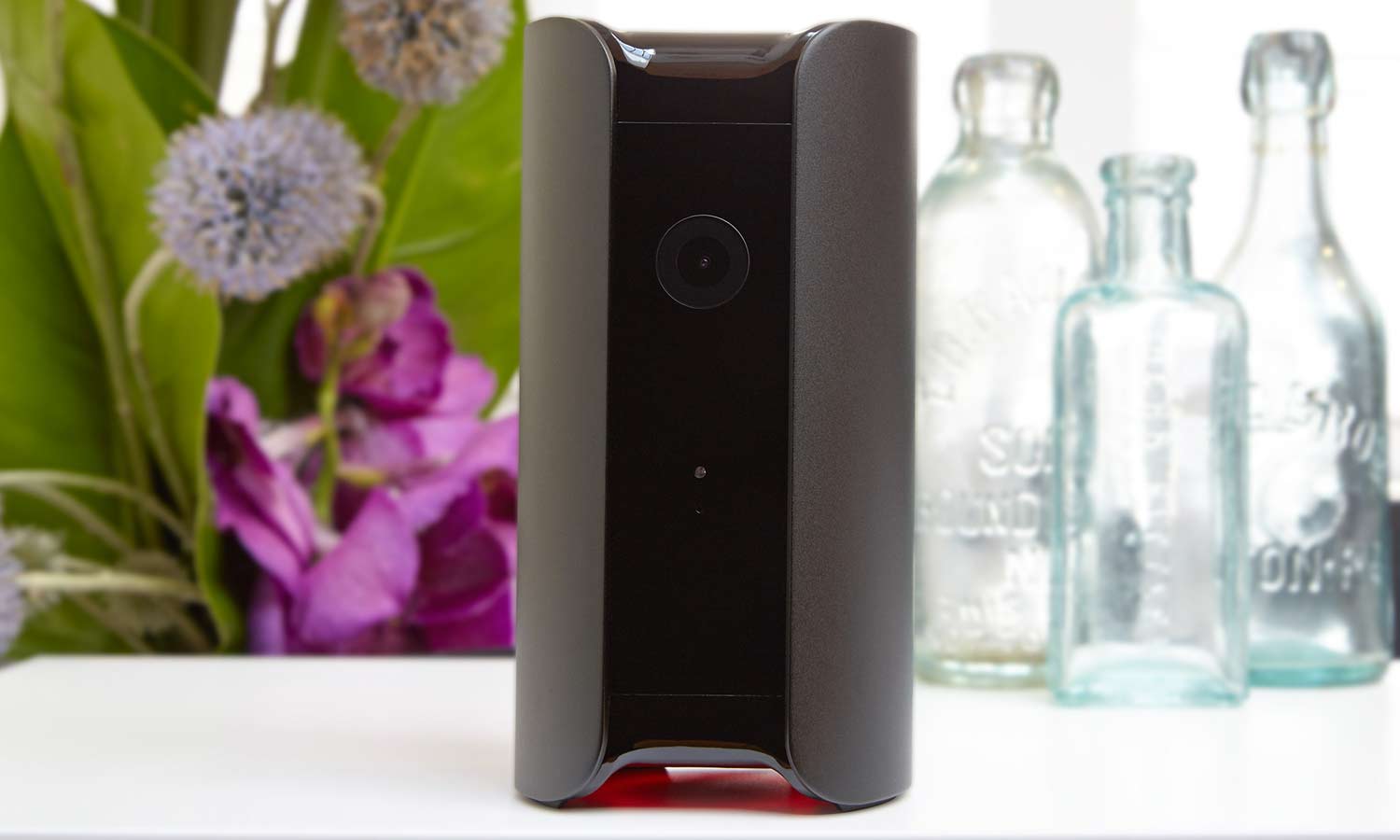
The camera sports a ring of LEDs around its bottom, which glow green when the camera is armed (recording with alerts), and yellow when it's disarmed (recording without alerts). There's also a Privacy mode in which the camera and microphone are completely shut off.
The Canary Pro doesn't pack a lot of heft, feeling somewhat flimsy in my hands, but I was surprised that this slick, water-bottle-shaped camera could pack in so many features. The colors are slight and not particularly distracting, although I would not recommend setting up the Canary near a TV, as the device's constantly changing lights could be a tad distracting when you're watching your favorite flick.
One downside is that the device can be placed only on flat surfaces. It doesn't have the magnetic or mountable camera stand of other home security cameras, such as the Nest Cam. Canary partially makes up for this issue with its impressive 147-degree lens, which is a full 17 degrees wider than the Nest Cam's.
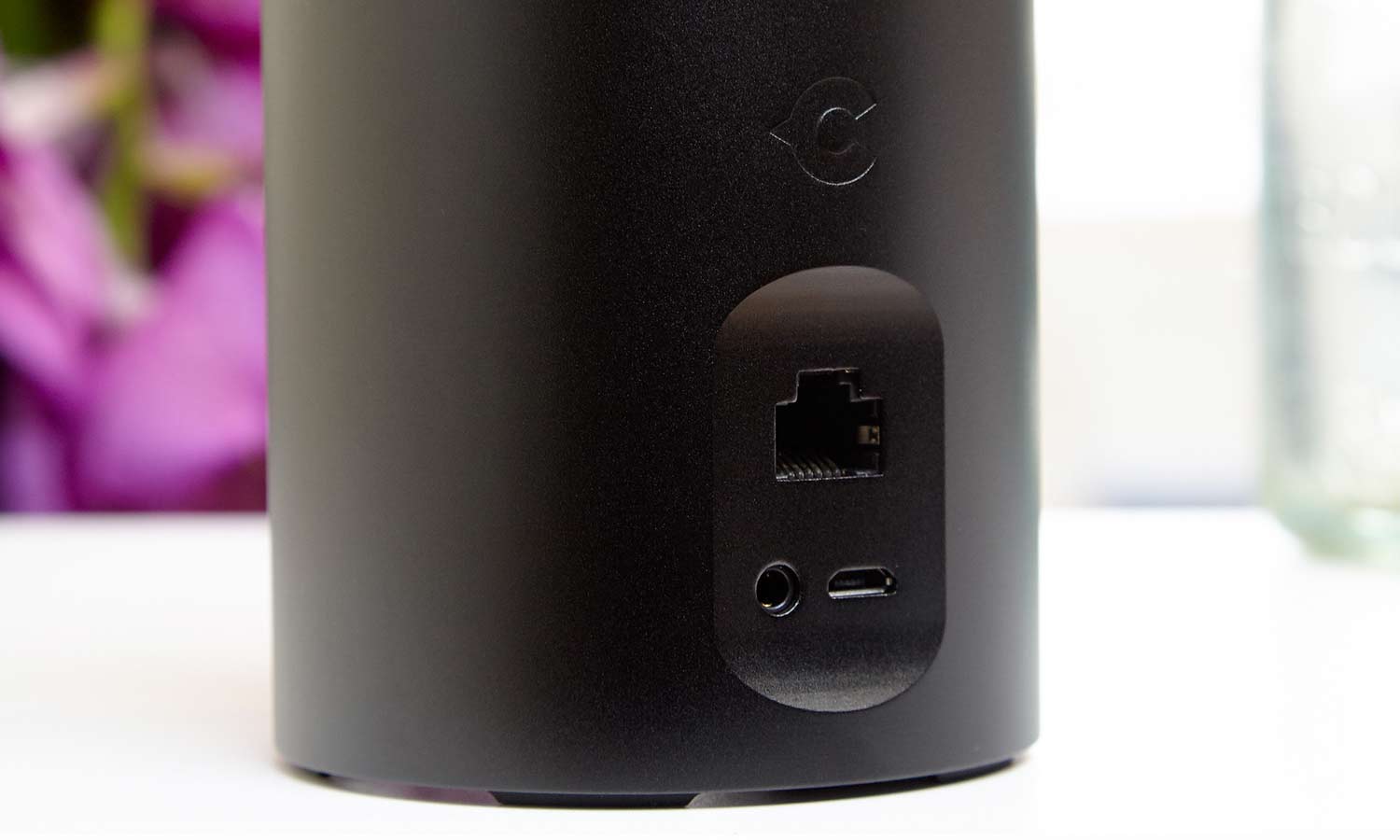
The wide-angle lens is located in the middle of the shiny, black center panel on the camera's front side. The Canary can operate wirelessly or be hardwired via its Ethernet port.
Get instant access to breaking news, the hottest reviews, great deals and helpful tips.
Features
In one little package, Canary incorporates multiple features, each meant give you a closer look at what's going on inside your home. It starts with the 147-degree wide-angle lens that captures 1080p HD video, available as a live stream or recorded footage.
MORE: Best Smart Home Tech
The footage is crisp and clear, and a zoom feature in the mobile app allows you to pan, tilt and zoom the camera. I could see details even in low-light situations when reviewing clips. The Canary Pro's sensors do an excellent job of smoothing out the video and allowing for detail in low-light situations, even before the night vision kicks in, and the most recent software updates integrate compatibility with the Wink line of smart-home gadgets.
Canary monitors your home for motion, temperature, humidity and air quality, and sends you alerts if it notices anything wrong. It's also equipped with a microphone and built-in speaker. But unlike the Nest Cam, the Canary will not send you sound-activated alerts when the microphone picks up a loud noise.
However, sound capture by the Canary microphone is superb. I could clearly hear not only a quiet conversation between two people who were in the same room as the Canary, but also understand most of what was said by a person in a completely different room. This was a pleasant surprise.
The camera gives you the ability to sound a very loud and startling 90+ dB siren from the app. When you receive an alert on your smartphone, you can see what triggered it, and have the option of sounding the camera's siren or calling emergency services. If you watch a video alert and see a burglar in your home, you can scare him or her away straight from your smartphone.
The Canary Pro's siren is loud — it's definitely going to be effective in startling someone who doesn't belong in your home. Whoever hears the siren will most certainly understand that they've been detected. The siren is perhaps the most important home-safety feature of the Canary.

The device has convenient geofencing technology, which lets it detect when there's a registered device (such as your smartphone) within a certain range. As long as it does detect such a device, the camera will remain in "disarmed" mode. But as soon as your device leaves the geofenced area, Canary automatically switches the camera to "armed."
This means that you don't have to worry about forgetting to turn the camera back on when you leave the house, and that you won't get a hundred pesky alerts when you're sitting in your living room watching TV.
I really appreciated this automatic arm/disarm capability. I'm not a huge fan of being watched as I unwind at the end of the day, so it was nice to not have to think about that, and to not worry about remembering to arm the camera again when I left.
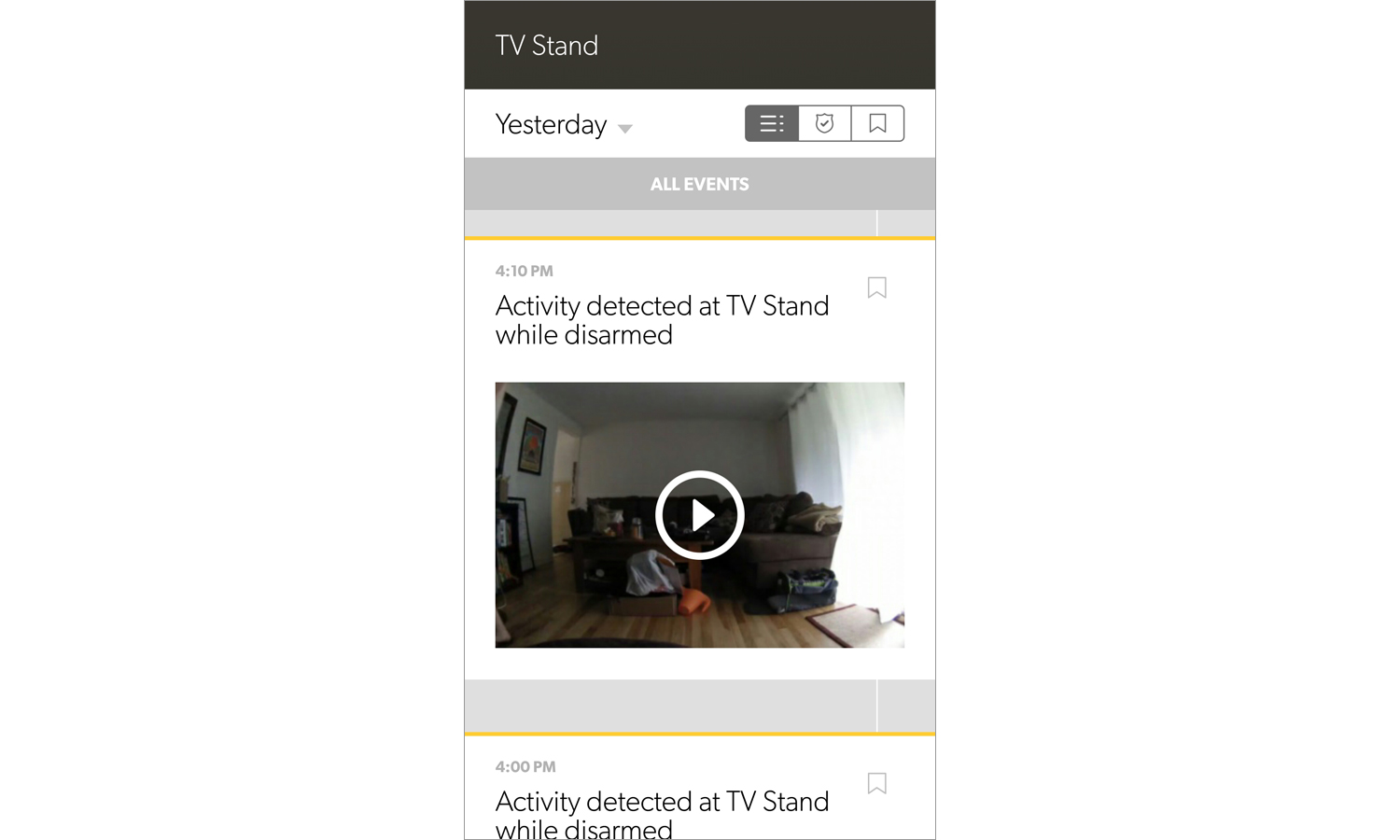
However, I learned quickly not to register too many devices with the Canary. If I left one of my tablets or my work phone behind when leaving the house, Canary wouldn't arm itself; this is because it tracks the device, not the person. Pro tip to Canary users: Limit the number of devices upon which you install the Canary mobile app. This will minimize such issues, and make coordinating the Canary's settings much simpler.
Smartphone App
The Canary app is available for Android and iOS devices, and there's a bare-bones browser interface for desktop computers. Canary also operates on a platform that many other security cameras do not: the Apple Watch.
But maneuvering through the phone app is fairly intuitive, and it's easy to manage multiple Canary cameras from one device. From the app, you can receive motion and climate alerts, view your video clips, zoom the lens and sound the siren.
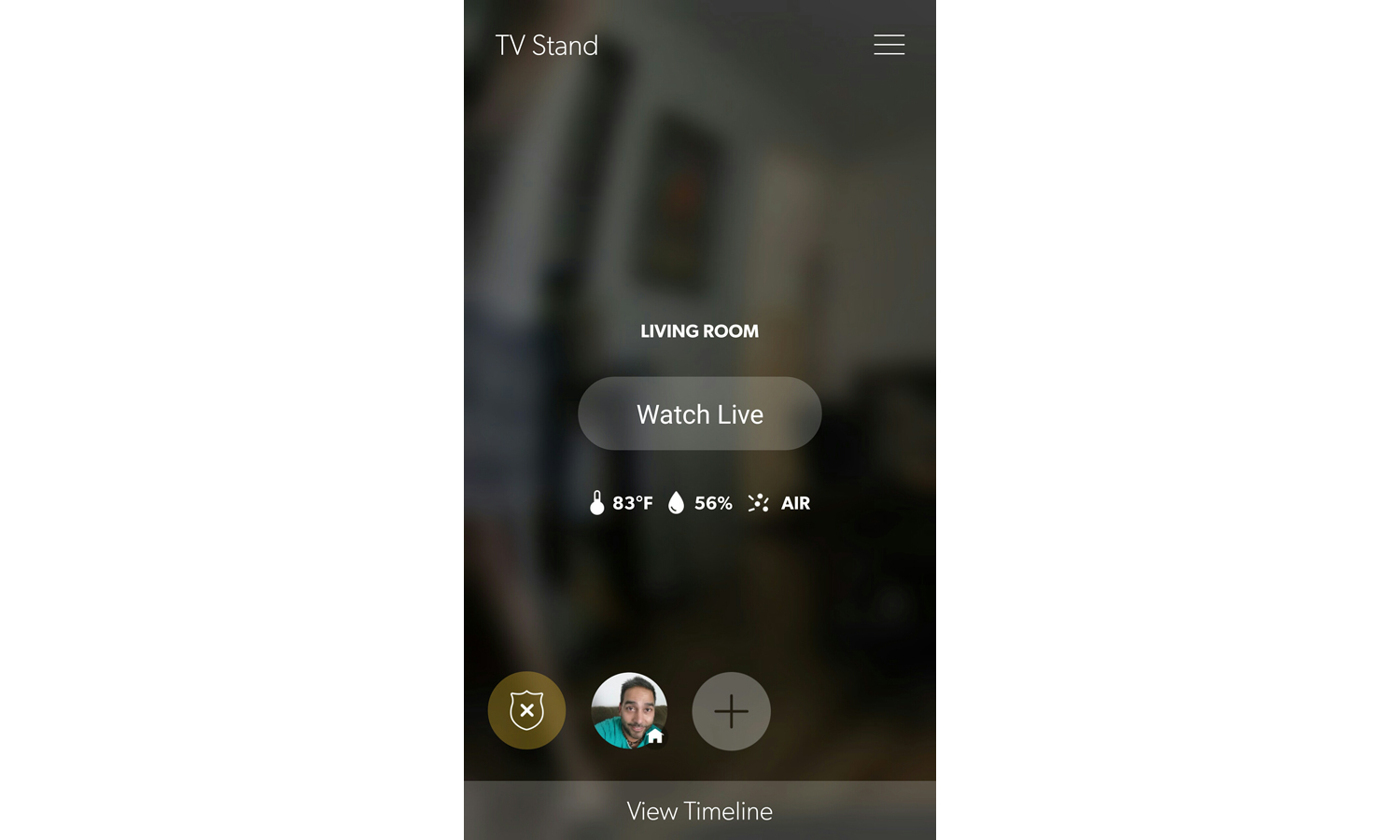
The app is loaded with features, yet is very simple in its design and layout. This is a huge plus for those who are not entirely tech-savvy; what you see is not overwhelming, but is quite easy to use. However, any gadget-ophile will be thoroughly pleased with the numerous features and ways to control the camera.
I came to appreciate the app's intuitive layout. The live-video feed plays along the top of the screen, while icons for the different features of the app are lined up below that.
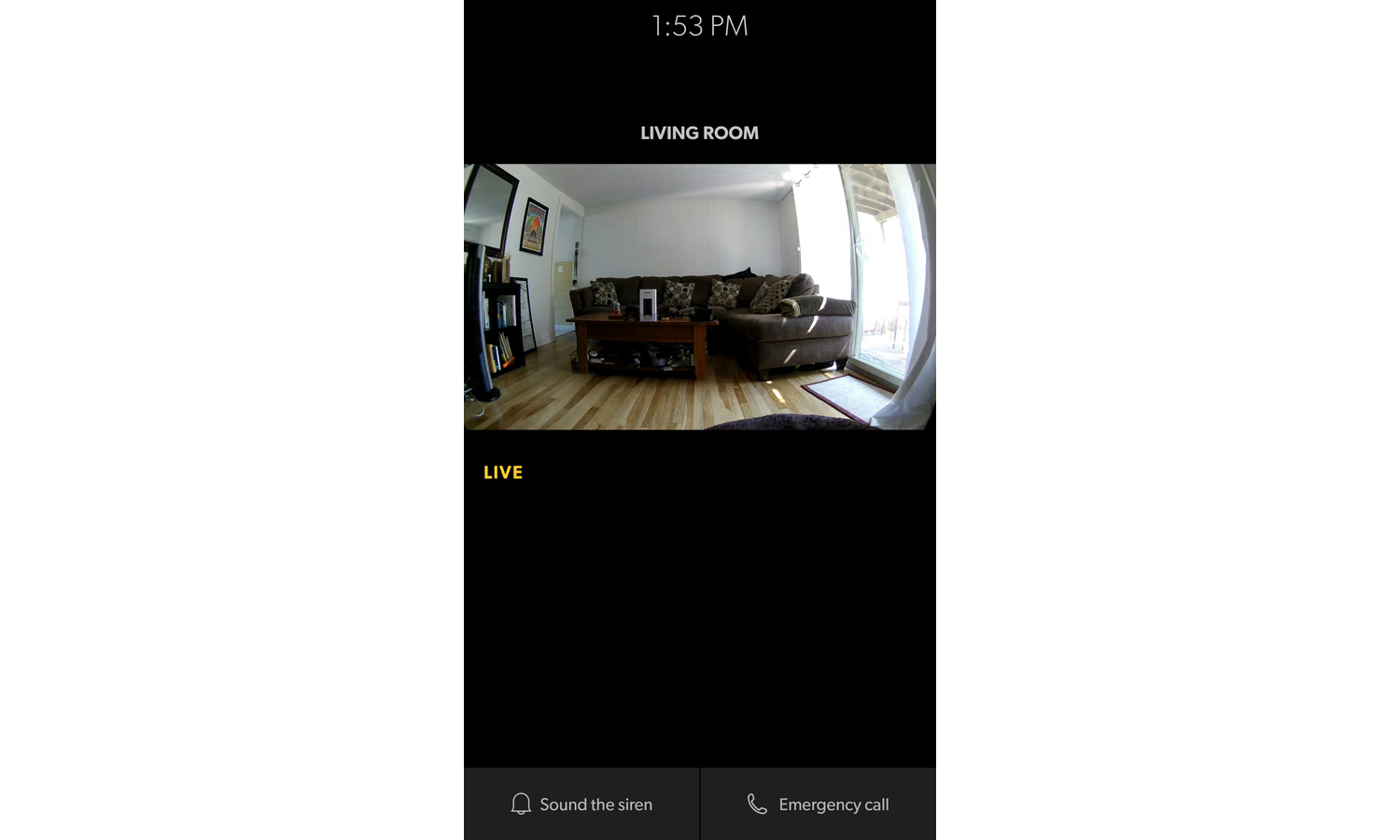
From this screen, you can quickly and easily sound the alarm or call emergency services if you see something suspicious. After a short delay, you'll actually hear the piercing siren sound in the live feed. You can then tag the clip so that you know what's in the clip after you've saved it.
With a subscription to a premium storage account, starting at a reasonable $4.99 per month, you can also download videos or "bookmark" a certain number of video clips, depending on the level of your subscription. When you bookmark a video clip, it stays in the cloud forever.
Performance
Like other web-connected security cameras, the Canary Pro features motion detection and alerts, but those features were inconsistent for us. Small, harmless movements, such as shadows shifting, triggered false alerts. Users might start ignoring the notifications they receive, defeating the purpose of a security camera.
Canary has been working on this oversensitive-alert problem, and recent app and firmware updates have helped reduce the number of false alarms. You now have the option of tagging an alert to tell Canary you no longer want to receive that type of notification, and there's a "sensitivity slider" in the mobile app to further help train the camera. It takes the camera some time to learn the kinds of alerts you don't want to receive, but this learning process does improve the quality and frequency of the alerts you get.
The app was excellent at identifying, editing and saving clips. It was a pleasant experience learning how to locate and manipulate video clips, which were easy to find in the app.
I was really impressed by the sound quality. Voices and words were easily discernible on recorded clips, even when people were speaking at very low tones, as an intruder might do. The speech was entirely audible, clear and easy to understand. This speaks to the quality of the app software, as well as the microphone in the camera itself.
Temperature Tracking
While the Nest Cam is compatible with Nest's smart thermostat, the Canary Pro incorporates "Homehealth Technology" directly into its camera. The Canary houses several sophisticated sensors: an air-quality sampler, a motion detector, a humidity sensor, a temperature gauge and a 3-axis accelerometer.
However, you have to carefully consider where you place the camera. Put it too close to other audio-visual equipment, and you'll get a false temperature reading because those components generate heat. The same goes for placing the Canary too close to a window or an air-conditioning unit.
The temperature and moisture data can be used in many different ways. I monitored my dog, Veda, while I was out, checking in on her on the live feed and seeing the temperature and air quality right from my phone.
MORE: How to Secure Your (Easily Hackable) Smart Home
I was able to track the temperature changes throughout the day, and used the information to adjust the temperature and cooling schedule on my air-conditioning unit to turn on during the hottest hours for her. Seeing the air quality graded "abnormal" in my home did raise a red flag for me. If only Canary had a built-in air purifier as well.
While these atmosphere-detecting features are a great add-on, they should not be used as the primary means of telling how hot, humid or smoky it is in your house. There are just too many variables that can skew the Canary's temperature and air-quality readings in one direction or another.
Installation and Setup
Setting up the Canary Pro is a relatively simple process that takes minutes, and most of the work is done for you once you install the Canary mobile app, which is available for Android, iOS devices or Apple Watch. However, that simplicity and automation can also be a problem if something goes wrong during the process; if so, you'll have to start over.
I had to restart the setup process four times because the mobile app didn't like my Wi-Fi password. What should have been a 5-minute process became 20 minutes of frustration — especially because the user must tether his or her phone to the camera via an audio cable during setup, and can't use other apps on the phone in the meantime. (Canary said this problem has been fixed in recent software updates, and our own second look at the unit confirmed that.)
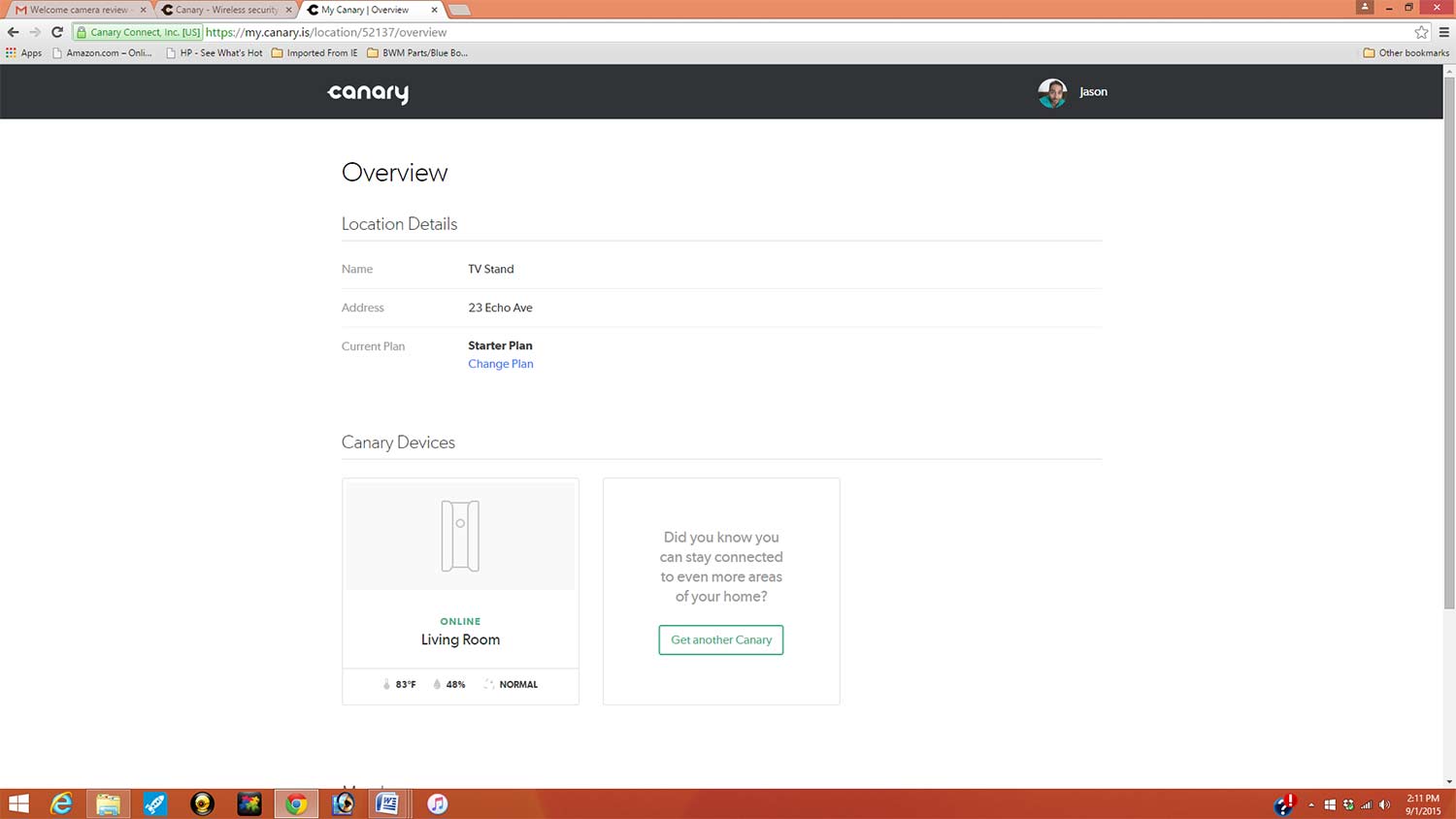
On its website, Canary claims that the camera comes with "no contracts or monthly fees." This is true, if you're satisfied with the basic, free Starter Plan, which gives you access to the past 12 hours of cloud-based recorded footage, but only three downloadable video clips.
However, the company offers Premium video-storage plans in the cloud. Starting at $4.99 a month (or $49 a year), you can choose among plans that let you view footage from the past two days ($5 per month), seven days ($10 per month) or 30 days ($30 per month) storage plans, with unlimited downloads and discounts for yearly subscriptions.

That's a little pricier than Nest Cam's Nest Aware subscription plans, which cost $10 per month for the past 10 days of video and $30 for the past 30 days. Like Canary, Nest discounts the plans if you pay for a full year at once.
MORE: Which Security Camera Has the Best Storage Plan?
You can have up to four Canary devices in the same household, and they'll work in sync with each other, allowing you to easily view the footage from all four cameras on one timeline. You can also register multiple mobile devices from which the Canary cameras can be controlled, so everyone in the family can benefit from security notifications.
The Canary app can control all four devices via your smartphone. There is a desktop Web interface, but it's only for setting up new devices or updating your account preferences. All of the main controls are accessed through the mobile app.
Bottom Line
The Canary Pro combines solid high-quality HD video and excellent sound with unique features not found in most home-security cameras. While the camera's price is a tad high at $199, the temperature, humidity and air-quality sensors make the purchase more appealing.
The camera's motion alerts could still use some fine-tuning, and a more robust Web interface would be great for those who can't be checking their phones all day. But the live feed and ability to sound the siren or call police in an emergency are valuable home-security tools, and the cloud-storage plans for video footage are reasonably priced. All in all, the Canary Pro is a quality security camera that's consistently improving.

Jason is a contributing writer for Tom's Guide based in the US with a focus on smart home and security coverage. He has reviewed smart locks, home-based security systems and password managers. As a result, both his home and personal computer are guarded like a fortress.

